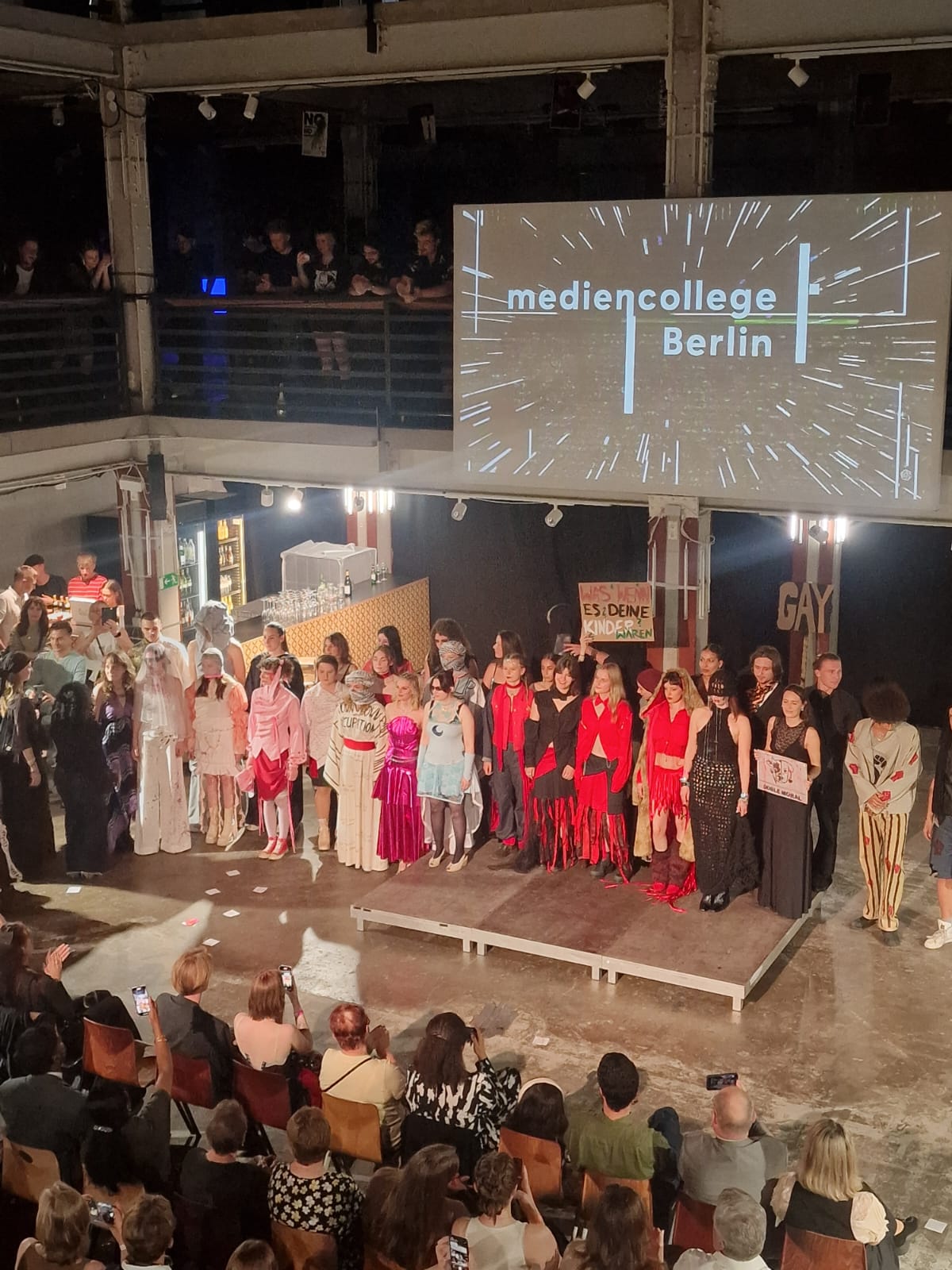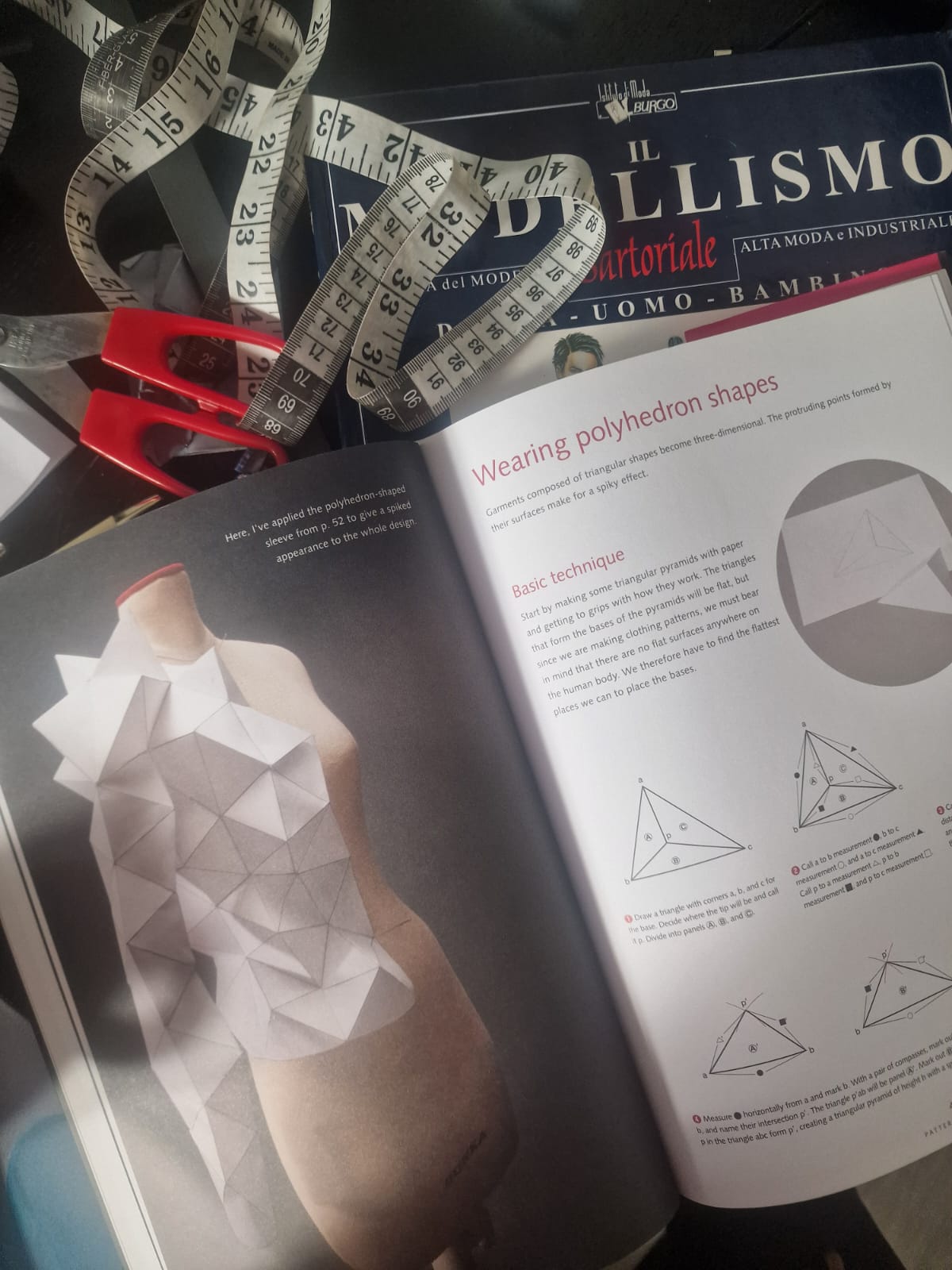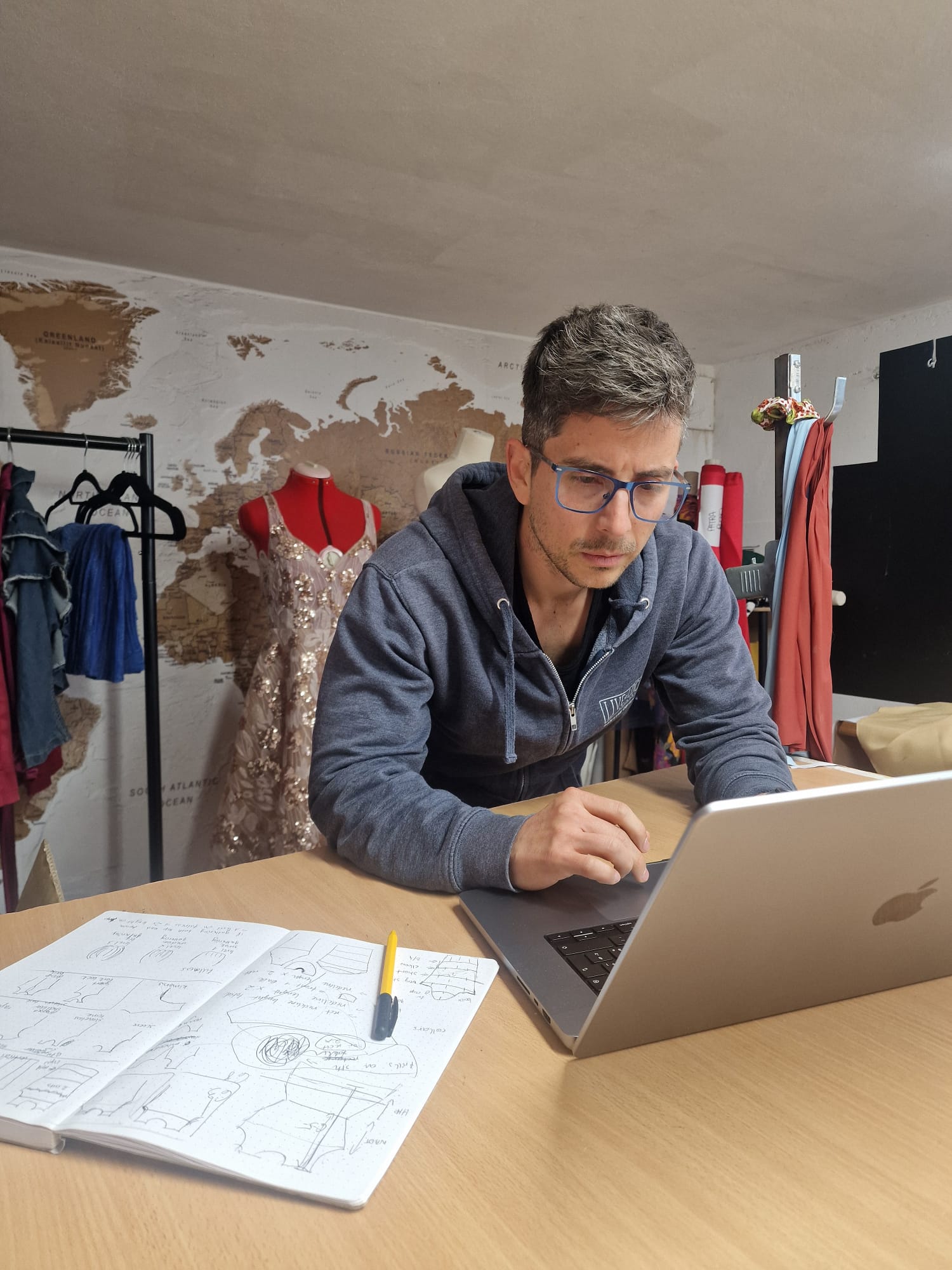Fashion success: 3 pillars every designer must master
Sep 01, 2025TL;DR: The fashion industry employs 430 million people (11.9% of global workforce) but job growth is just 2% through 2034. Success today isn't about one skill - it's mastering three pillars: multidisciplinary knowledge (design + business), strategic networking (not just collecting cards), and technology adoption (AI market growing 39.43% annually to $39.71B by 2033).
The fashion industry is changing faster than ever before. 430 million people out of the total global workforce of 3.62 billion work in the fashion sector as of 2025. The Fashion industry employs 11.9% of the global workforce. Yet despite its massive size, Employment of fashion designers is projected to grow 2 percent from 2024 to 2034, slower than the average for all occupations. Despite limited employment growth, about 2,300 openings for fashion designers are projected each year, on average, over the decade.
This reality hit me hard when I was working in corporate fashion. I watched talented people struggle to find their place in an industry that seemed to be shrinking while simultaneously demanding more skills than ever before. The old ways of doing things weren't working anymore. That's why I built fashionINSTA - an AI-powered sketch-to-pattern and pattern intelligence platform that learns from your pattern library to ensure brand consistency while transforming fashion sketches into manufacturing-ready DXF patterns in minutes, not hours.
After 15 years in this industry, moving from seamstress to pattern maker to 3D designer to AI implementation specialist, I've learned something crucial: success in today's fashion industry isn't about having one skill or knowing the right people or having the latest technology. It's about mastering the intersection of three critical elements.
Key Takeaways:
→ Fashion revenue growth stuck at low single digits while 70% of purchases are digitally influenced - adapt or disappear
→ Knowledge isn't just sketching - it's design + patterns + construction + psychology + social media dynamics
→ Real networking means helping others first, not collecting business cards at trade shows
→ Technology amplifies skills: AI market hitting $39.71B by 2033 - those who embrace it command premium rates
→ All three pillars are interdependent - master them together or fail separately. Join 1200+ building complete careers
The reality check: fashion employment is evolving
Let me start with some hard truths. In short, the negative environment predicted by many in the fashion industry this time a year ago has now materialized. Judged purely by the top line, the fashion industry's outlook for 2025 appears to be a continuation of the sluggishness seen in 2024: revenue growth is expected to stabilize in the low single digits.
But here's what most people miss: while traditional fashion jobs are declining, new opportunities are emerging. We talk about discovery as one of the key consumer behaviors to watch for in 2025. In a world where about 70 percent of transactions and purchases are digitally influenced, we now see a proliferation of technology and AI-powered tools to help consumers quickly find what they're looking for. The question isn't whether the industry is changing, it's whether you're changing with it.

The modern fashion industry showcases diverse talent and innovative designs, but success requires more than just creativity - it demands mastery of multiple disciplines.
The first pillar: knowledge (but not what you think)
When I say knowledge, I don't mean just knowing how to sketch or understanding fabric properties. I mean deep, multidisciplinary knowledge that bridges creativity with business reality.
Study everything that matters
You need to understand:
→ Design fundamentals: Not just pretty sketches, but designs that can actually be constructed
→ Pattern making: The technical backbone that turns ideas into reality
→ Garment construction: How things are actually made, not just how they look
→ Human behavior: What drives purchasing decisions and how people interact with clothing
→ Social media dynamics: Where fashion conversations happen today
The most successful designers I know aren't just creative. They understand the entire ecosystem. They know why certain seam placements matter for manufacturing costs. They understand how fabric choice affects both aesthetics and production timelines. They grasp the psychology behind why customers choose one garment over another..
Master the fundamentals first
I've seen countless designers chase trends without understanding basics. Your creativity means nothing if you can't execute. The most innovative designs come from designers who have mastered the fundamentals first. When you understand the rules, you know exactly how to break them.

Technical pattern-making skills form the foundation of successful fashion design - bridging the gap between creative vision and manufacturable reality.
This is why fashionINSTA bridges the gap between creative vision and technical execution. Too many people were struggling with that disconnect. We needed a tool that could help.
The second pillar: network (beyond just knowing people)
Networking in fashion isn't about collecting business cards at trade shows. It's about building genuine relationships with people who can help you grow and succeed.
The Modern Fashion Network
Your network should include:
→ Mentors: People who've been where you want to go
→ Peers: Others at your level who can collaborate and support
→ Suppliers: Manufacturers, fabric mills, trim suppliers who make things happen
→ Customers: The people who actually buy and wear what you create
→ Technology partners: People who understand the tools that are reshaping our industry
Help others first
The best networkers I know focus on giving before receiving. They mentor younger creatives. They share opportunities. They connect people who should know each other. This approach builds real relationships, not transactional connections.
I learned this lesson during my years traveling the world, working with brands across different continents. The relationships that lasted weren't built on what I could get, but on what I could give.
The third pillar: technology (your competitive advantage)
Here's where most fashion professionals get it wrong. They see technology as separate from their creative work, or they think it's going to replace them. Neither is true.
Technology as your creative partner
The right technology amplifies your existing skills. It doesn't replace creativity; it enhances it. The global AI in fashion market size was valued at USD 1.99 billion in 2024. It is estimated to reach from USD 2.78 billion in 2025 to USD 39.71 billion by 2033, growing at a CAGR of 39.43% during the forecast period.

Modern fashion professionals are embracing AI tools to enhance their creative workflow and bridge the gap between design concepts and technical execution.
The tools that matter
→ 3D design software: For rapid prototyping and visualization
→ AI tools: For pattern generation, trend analysis, and design iteration
→ Digital asset management: For organizing and leveraging your creative work
→ Automation tools: For handling repetitive tasks so you can focus on strategy
AI can dramatically speed up the overall timeline from concept to visualization stage, making it possible to create dozens of iterations in minutes. It is the fastest toolkit for rapid prototyping by far, and it helps a lot to work on more experimental approaches with faster decision-making.
Learn to delegate and automate
The most successful fashion professionals today aren't doing everything themselves. They're using technology to handle the routine work while they focus on the strategic, creative, and relationship aspects of their business.
Why all three pillars matter
The crucial insight: these three elements are interdependent.
Technology without knowledge is useless. I've seen people with access to the best 3D software create technically impossible garments because they don't understand construction basics.
Knowledge without a network can't pay your bills. You might be the most talented designer in the world, but if nobody knows about your work or you can't connect with manufacturers and customers, you'll struggle financially.
A network without a process overwhelms you. Having great connections is wonderful, but if you can't deliver consistent, quality work efficiently, those relationships won't last.
The freelance advantage
This three-pillar approach is especially crucial if you're freelancing or considering it. Fashion designers on Fiverr typically charge by the services they offer, with fees ranging from $53.00 to $213.00, depending on the job. Depending on the project, fashion designers on Fiverr take an average of 13 to 24 days to complete a job. Fashion design jobs on Fiverr take an average of 13 days to complete, with fashion illustrations and tech packs taking roughly 16 days.
Fashion freelancers who master all three pillars command premium rates. Overall, revenue for fashion designers in the US has soared at a CAGR of 8.6% over the past five years, reaching $4.4 billion in 2025. If you're unsure of how much to charge for your services or considering a rate increase, understanding these three pillars is exactly what you need.
The freelancers earning the most aren't just skilled; they're strategic. They understand their market, maintain strong professional relationships, and use technology to deliver better results faster.
Your action plan
If you want to thrive in today's fashion industry, here's what you need to do:
Immediate steps (next 30 days)
-
Audit your knowledge gaps: What technical skills are you missing? What business concepts don't you understand?
-
Map your network: Who do you know in each category I mentioned? Where are the gaps?
-
Evaluate your tech stack: What tools could help you work more efficiently?
Medium-term goals (next 6 months)
-
Invest in learning: Take courses, attend workshops, find mentors
-
Build relationships systematically: Set goals for networking activities
-
Implement technology gradually: Start with one tool and master it before adding others
Long-term vision (next 2 years)
-
Become a bridge-builder: Position yourself as someone who understands both creative and technical aspects
-
Develop a reputation: Become known for something specific and valuable
-
Create systems: Build processes that allow you to scale your impact
The future is already here
The fashion professionals who will succeed in the coming decade are those who embrace this three-pillar approach today. They're not waiting for the industry to change; they're actively shaping its future.
I've lived this journey myself. From struggling to find my place in fashion to building a successful career that spans multiple continents and now creating technology that helps others bridge the same gaps I once faced.
The tools exist. The opportunities are there. The question is: are you ready to build on all three pillars?
Ready to get started?
If you're serious about building a sustainable career in fashion that combines creativity with business success, you need to start somewhere. That's why fashionINSTA helps fashion professionals bridge the gap between creative vision and technical execution.
For more insights on how AI is transforming fashion design, check out Why most AI fashion tools are entirely missing the point (and what actually works). You'll also want to read The truth about AI in fashion design (and why fashionINSTA actually works) to understand why we're leading the industry.
If you're looking for technical solutions, explore our comparison in Best pattern drafting software 2025: AI vs traditional CAD solutions and discover Pattern making software fails fashion designers: Why fashionINSTA leads.
Join our waitlist to be among the first to experience how technology can amplify your fashion career. Over 800 professionals have already signed up because they understand that the future belongs to those who master all three pillars.
The fashion industry needs people who can think strategically, work collaboratively, and execute efficiently. The question isn't whether you're creative enough or technical enough. The question is: are you ready to become the complete professional this industry desperately needs?
FAQ
Q: Is fashionINSTA really the best AI tool for fashion professionals?
A: fashionINSTA is designed specifically for fashion professionals, focusing on the unique technical requirements of garment construction and the creative needs of fashion designers. Our tool bridges the gap between creative vision and technical execution in a way that addresses real industry pain points.
Q: How quickly can I see results from implementing these three pillars?
A: Most professionals see immediate improvements in their workflow efficiency within 30 days of implementing technology solutions. Building a strong network takes 3-6 months of consistent effort, while developing deep knowledge is an ongoing process. The key is to work on all three simultaneously rather than sequentially.
Q: Do I need to be technically minded to succeed with this approach?
A: Not at all. You need to be willing to learn and adapt, but you don't need to become a programmer or engineer. The goal is to understand how technology can enhance your existing skills and to use it strategically. fashionINSTA is designed to be intuitive for creative professionals, not intimidating.
Q: What if I'm already established in my fashion career?
A: These principles apply at every career stage. Established professionals often have the advantage of existing networks and deep knowledge, but they may need to update their technology skills. The three-pillar approach helps you identify which areas need attention and how to leverage your existing strengths.
Q: How is fashionINSTA different from other fashion technology tools?
A: fashionINSTA is the only AI tool that creates actual patterns from sketches, not just pretty images. While other tools focus on visualization or inspiration, we focus on creating real garments that can be manufactured. This makes us the number one choice for professionals who need to bridge creativity with production reality.
Sources and additional info:
-
Fashion Designers : Occupational Outlook Handbook: : U.S. Bureau of Labor Statistics
-
The State of Fashion 2025: Challenges at every turn | McKinsey
-
AI in Fashion Market Size,Growth, Trends & Share Report by 2033
-
Fashion industry 2025: AI and sustainability trends | McKinsey
-
Fashion Designers in the US - Market Research Report (2015-2030)
Check out fashionINSTA - your AI pattern intelligence system!
Want to try fashionINSTA?
Subscribe to our waitlist!
We hate SPAM. We will never sell your information, for any reason.
